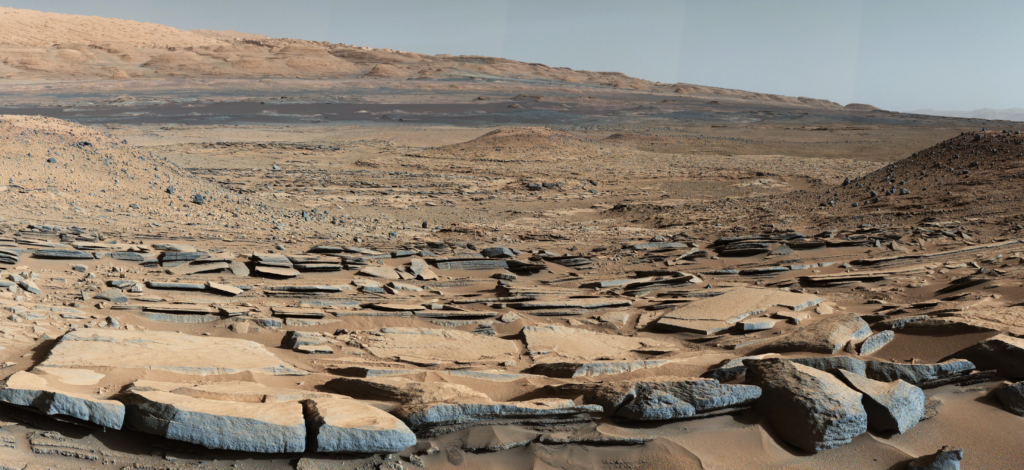Marketing Mars

Ever since I was a teenager reading Ray Bradbury and Edgar Rice Burroughs’ “John Carter of Mars” series (the latter mostly because I had the hots for Dejah Thoris, Princess of Mars, who walked around naked all the time), I’ve fantasized about going to Mars. Indeed, by 1969, when we first landed on the moon, I was certain that we’d not only have colonies on the moon, but on Mars by 2001 (A Space Odyssey).
Yeah, right. It’s 2018 and we’re still talking about moving to Mars… some day. We even dropped just colonizing the moon quite a while ago.
And we don’t even have flying cars yet.
We’ve sent a few robot SUVs to Mars and have found out a lot that we didn’t know when my adolescent self was curled up reading about John Carter getting busy with Dejah Thoris. We’ve found out there’s no water there (or not enough to do anything with, like growing plants and drinking). There’s virtually no atmosphere. With an average temperature of -67 degrees (in the summer!), it’s about as balmy as an Antarctic winter. There’s no life, or the suggestion that there ever once was life. The planet is perpetually cooking in a wind of lethal, solar radiation because Mars has no magnetic field. Why is that? Because it’s such a feeble would-be planet that it couldn’t even keep its iron core molten to generate a magnetic field. Living there would be like setting up camp inside of a giant microwave oven.
And it goes without saying that there are no canals, ancient glass cities, flying ships, lush valleys, or naked princesses. In fact, the feasibility of colonizing Mars is infinitely less likely than turning Antarctica into a Sandals Resort. Have the time of your life; all remaining 2.7 minutes of it.
And, yet, we’re still flogging that idea of not only putting a human on Mars, but of living there. Countless movies (The Martian, Red Planet, Mission to Mars, Total Recall, John Carter, Mars Needs Moms…), cable TV series (Mars), and sci-fi books (Ray Bradbury’s “The Martian Chronicles”, Kim Stanley Robinson’s “Mars” trilogy, “The Case for Mars”), have fanned that ardent desire, and kept Congress and successive administrations funding it. But does anyone really think it’s ever going to happen? Or is it just a marketing campaign run amok?
Science will solve everything.
Of course, I don’t know what I’m talking about. When I point out some of the not-so-small problems of colonizing Mars, like–oh, I don’t know–NO MAGNETIC FIELD, I’m told by people (who also don’t know what they’re talking about) that “science will solve all problems.” They love to bring out that old trope about the craziness of man flying, and yet along come Wilbur and Orville. Or about this thing called the Internet. Or the human genome. Or a phone in your pocket. Or shirts that look good untucked. Things we couldn’t even dream about a few years ago because we didn’t know they were possible. But what we have been dreaming about since before Wilbur and Orville is living on Mars. Still not possible.
These “science can solve everything” optimists love to talk about the resourceful, indomitable, human spirit. They make false comparisons about how the New World was inhospitable before Europeans colonized it. But no it wasn’t, it was already freakin’ paradise and home to hundreds of millions of people who were perfectly happy there before white men showed up with their guns and smallpox. It was no Mars. (I guess one advantage to colonizing Mars is that we won’t have to commit genocide on the indigenous Martians.)
The whole argument behind the marketing of Mars is the promise to solve problems that can’t be solved. Like that lack of a magnetic field. That’s something we can’t do anything about, unless the colonists want to live deep underground. And then, what’s the point of that? We can do that here.
But let’s say science does figure out a way to throw a protective magnetic field around Mars, generate a breathable atmosphere that won’t evaporate from Mars’s weak gravitational field or sublimate into space under the relentless solar wind, squeeze water out of rocks, grow stuff we can eat, and build stuff we can live in from the stuff lying around the planet. How much will that cost? Will it cost less than just stabilizing our own planet so it’s more livable? I mean, we already know this planet right here is comfortable for our species: We evolved for it. Many parts of Earth are breathtakingly beautiful. We just need to be a little more responsible, keep our population in check, and clean it up a bit. That would surely seem to me to be an easier marketing problem to get behind than colonizing Mars.
Not that I’m against sending some people to Mars. If I can choose the people. You know, just to test to see how many minutes a human being could live there.
